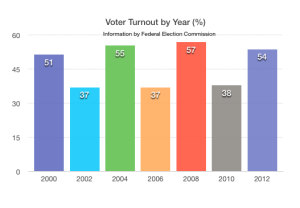Why 2014 Can Be a “Year of Action” for Americans
Leah Fleischel, Moon News Cloud Contributor
During the State of The Union address last Tuesday, President Obama declared 2014 his “year of action.” He plans to use his executive powers whenever possible while simultaneously pushing Congress to take more action with him.
The word “action” undoubtedly brought eye rolls from U.S. citizens, knowing full well that getting anything accomplished with this and the most recent Congress and this President has been a struggle. Even the most necessary of issues, such as approving the budget for fiscal year 2014 that brought on a 16-day shutdown of the government, have proven to be tasking.
President Obama’s approval rating has dropped from 52 percent down to 43 percent since early 2013 in the RealClearPolitics.com average of all polls. Congress holds an all-time low rate of about 9 percent. Many Americans literally are shaking their fists in rage and wondering aloud how on earth people like these were trusted to run this country.
The United States of America is a democracy, so every single one of these individuals was elected into office. They were indeed elected by the people, but the complaint is that they are not working for the people. The solution seems easy, vote them out of office. Well, easier said than done.
Nov. 4, 2014 provides a great opportunity for voters to reform government, as all 435 seats in the House of Representatives and 33 of the 100 seats in the Senate are contested.
Historically speaking dating all the way back to the 1970s, election years that are presidential have a voter turnout between 50-55 percent, while midterm elections range from 36-39 percent, according to the Federal Election Commission.
2012, the congressional approval rating averaged 15 percent according to Gallup polling, yet 90 percent of incumbents got re-elected.
People hate Congress, but generally they like their member of it. That explains why, for example, in 2012, with Congress at a 15 percent approval rating, nine in 10 current of its members were re-elected.
Citizens who can name their representative, as only one-in-three Americans can do, are also more inclined to like him or her. Those who are educated like what they have chosen, and are more likely to vote because they are invested in that member. They are also likely to be more polarized, hence the startling amount of Congress members who lean to the far left or right.
Many would see the problem as the low rate of voters in mid-term elections, but the real problem is the even lower rate of educated voters in any election. The three needed components to even start to get things back on track are awareness of current issues, awareness of a politician’s past (how they’ve voted and what they’ve said), and sense of urgency to fix the problem at hand.
Additionally up for grabs this November are 38 state governorships, 46 state legislatures and numerous other state and local races. Though these are also of great importance, some states are in more dire need for reform than others, but the largest issue at hand remains on the national level.








